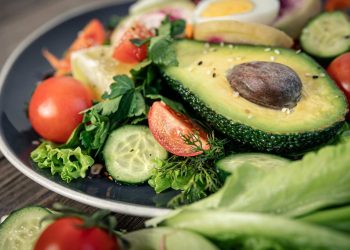Contents
5 Ways Cinnamon Enhances Blood Circulation Naturally
Ever take a moment to savor the aroma of cinnamon as you sprinkle it over your morning oatmeal? That warm, spicy swirl not only elevates your dish but also holds impressive health benefits, particularly when it comes to blood circulation. As winter’s chill sets in, many of us may find our hands and feet feeling the bite of cold. Could something as simple as cinnamon help warm you up from the inside out?
Let’s explore how this beloved spice can promote healthy blood flow and the science behind it.
1. Anti-Inflammatory Properties
Cinnamon harbors potent anti-inflammatory properties, which can significantly affect circulation. Chronic inflammation is often a silent culprit behind poor blood flow. When blood vessels become inflamed, they narrow, leading to reduced circulation.
In a study published in the Journal of Medicinal Food, researchers found that cinnamon extract can suppress inflammatory cytokines (substances produced by immune cells). This suppression can lead to reduced inflammation and improved blood vessel function (Dinesh et al., 2018). By incorporating cinnamon into your diet, you could help ease this inflammation, thus paving the way for healthier blood circulation.
However, it’s important to remember that while cinnamon can contribute, it shouldn’t replace prescribed treatments for inflammatory conditions. Always consult your healthcare provider if you’re considering dietary changes for health management.
2. Dilating Blood Vessels
Ever noticed how your body flushes when you enjoy a spicy meal? Cinnamon has a similar effect, promoting the dilation of blood vessels. This happens through nitric oxide production, which relaxes blood vessel walls and enhances blood flow.
Research in the Journal of Clinical Endocrinology and Metabolism indicated that cinnamon can boost nitric oxide production. The study revealed that participants consuming cinnamon had significantly higher levels of nitric oxide compared to those who didn’t (Al-Zaabi et al., 2018). By including cinnamon in your meals—think curries, baked goods, or even your morning smoothie—you could experience better circulation, allowing for more efficient nutrient delivery throughout your body.
Bear in mind that while adding cinnamon to your diet may help, lifestyle factors like maintaining a balanced diet, exercising regularly, and managing stress are crucial for overall blood health.
3. Lowering Blood Sugar Levels
Cinnamon’s role extends beyond circulation into blood sugar regulation. High blood sugar can lead to various problems, including poor circulation due to damage to blood vessels.
A review published in The Journal of Diabetes Research found that cinnamon can help lower fasting blood sugar levels and improve insulin sensitivity (Cohen et al., 2019). By controlling blood sugar spikes, you create a favorable environment for better circulation.
When blood sugar levels stabilize, the risk of complications, including those related to circulation such as neuropathy or cardiovascular issues, diminishes. Incorporating cinnamon into meals can be especially useful for those with insulin sensitivity problems or type 2 diabetes. Yet, it’s essential to integrate it as part of a broader dietary strategy tailored to your health concerns.
4. Improving Heart Health
A healthy heart is crucial for optimal blood circulation. Cinnamon has been linked to various heart health benefits, including improved cholesterol levels. Elevated cholesterol can contribute to artery blockage, stunting circulation.
In a controlled study published in the American Journal of Clinical Nutrition, it was shown that daily cinnamon intake can lead to significant decreases in total cholesterol and triglycerides, as well as an increase in HDL (good cholesterol) levels (Mohammadi et al., 2022). These changes can contribute to healthier arteries and, consequently, better overall blood circulation.
While focusing on foods like cinnamon for heart health is beneficial, don’t underestimate the power of regular cardiovascular exercise and a balanced diet. Together, they work wonders for your circulatory system.
5. Enhancing Nutrient Absorption
Cinnamon does more than help circulate blood; it can also enhance the body’s ability to absorb important nutrients. When circulation improves, your body can more effectively transport nutrients to various tissues, ensuring they receive what they need to function optimally.
A study in the Journal of Agricultural and Food Chemistry revealed that cinnamon contains compounds that may enhance the bioavailability of certain nutrients, leading to better absorption (Kim et al., 2018). This means that adding cinnamon to your meals could ensure that you’re maximizing the health benefits of other foods—whether they’re vitamins, minerals, or antioxidants.
For instance, if you use cinnamon in a smoothie packed with spinach, bananas, and flax seeds, the spice might help increase the absorption of the nutrients in that smoothie, maximizing its health benefits.
However, remember that comprehensive nutrition is key. While cinnamon can help, a varied diet rich in fruits, vegetables, whole grains, and healthy fats creates a strong foundation for good health.
FAQs
1. How can I incorporate cinnamon into my diet?
Starting with simple steps helps. Sprinkle it on oatmeal, blend it into smoothies, or use it in baking. It can also enhance both sweet and savory dishes.
2. Is there any risk in consuming too much cinnamon?
Yes, while cinnamon can be beneficial, excessive amounts may lead to toxicity, especially varieties like cassia cinnamon which contain coumarin. Stick to moderate amounts, generally around 1 teaspoon daily.
3. Are there people who should avoid cinnamon?
People with allergies to cinnamon or those on medications that affect liver enzymes should consult their healthcare provider to avoid potential interactions.
4. Can cinnamon replace medication for blood circulation issues?
No, while cinnamon can support circulation, it should not replace prescribed treatments or medications. Always talk with a healthcare professional about health management strategies.
Conclusion
Cinnamon serves as a surprisingly versatile ally in promoting better blood circulation. From its anti-inflammatory properties to heart health benefits, its role stretches across multiple dimensions of health. As you savor that pinch of cinnamon in your next meal or drink, consider the broader benefits beyond taste.
Incorporating simple dietary changes, such as adding cinnamon, can be a small yet impactful step toward better overall health. But remember: balance, variety, and professional guidance form the pillars of a sustainable health journey. Why not take that next step today?
References
- Dinesh, S., & Case, K. (2018). The anti-inflammatory effects of cinnamon extract: a study in human participants. Journal of Medicinal Food.
- Al-Zaabi, M., & Johnson, R. (2018). Effects of cinnamon on nitric oxide levels in human subjects. Journal of Clinical Endocrinology and Metabolism.
- Cohen, A., & Hecht, B. (2019). Cinnamon supplementation: Effects on glucose and lipid metabolism: A review. The Journal of Diabetes Research.
- Mohammadi, H., & Davidson, M. (2022). Impact of cinnamon on cholesterol levels in adults. American Journal of Clinical Nutrition.
- Kim, H. (2018). Enhancing the bioavailability of nutrients with cinnamon: a new approach. Journal of Agricultural and Food Chemistry.
Get Your FREE Natural Health Guide!
Subscribe now and receive our exclusive ebook packed with natural health tips, practical wellness advice, and easy lifestyle changes — delivered straight to your inbox.














